In the second roundtable marking the HSJ100 list of the most influential people in healthcare, HSJ brought together experts to discuss how the health service can deliver the huge efficiency savings that will be needed in the next few years. Alison Moore reports
There can be no greater challenge for the NHS than making the significant efficiency savings needed in the next few years. The NHS Five Year Forward View highlights a £30bn funding gap by the 2020-21 financial year, if real terms funding remains flat over the next five years.
‘The NHS will need to find at least £22bn of savings’
It seems the NHS will need to find at least £22bn of savings. This would amount to efficiency savings at a higher level than have been seen recently.
With this daunting scenario in mind, HSJ brought together a group of senior NHS figures shortly before the election to look at how this could be achieved, in the second of two roundtables linked to the HSJ100 list of the most influential people in healthcare.
- HSJ100 roundtable: How best to identify the leaders the NHS needs
- Remind yourself who 2014’s most influential people in health were
Roundtable participants
- Mike Farrar Mike Farrar Consulting (roundtable chair)
- Sivakumar Anandaciva head of analysis, NHS Providers
- Jacqui Bate partner, executive search, Hunter Healthcare
- Nigel Beverley consultant
- Jason Dorsett finance, reporting and risk director, Monitor
- Stephen Dunn chief executive, West Suffolk Foundation Trust
- Nigel Edwards chief executive, Nuffield Trust
- Sir Sam Everington chair, Tower Hamlets Clinical Commissioning Group
- Candace Imison director, healthcare systems, Nuffield Trust
- Sally Morris chief executive, South Essex Partnership University Foundation Trust
- Mark Porter chair, British Medical Association council
- Anne Rainsberry London regional director, NHS England
- Simon Skillen chief executive, Fortrus
Independent consultant Mike Farrar, who chaired the debate, said: “It’s been said that in the run-up to an election politics trumps economics, but immediately afterwards economics trumps politics.”

This would make the question of where the NHS was going to save £22bn both important and pressing and he raised the question of what would happen if, come the mid-point in the financial year in September, a number of providers were “looking down the barrel of insolvency”.
The recently announced new care model “vanguard” would cover just 9 per cent of the country and deliver changes in three years’ time, which might not be a realistic answer to the savings problem, he added.
But has the NHS made all the easy wins in efficiency savings? Jason Dorsett, finance, reporting and risk director at Monitor, had a challenging perspective. “While most people are putting in a lot of effort, I think there is evidence of huge variation in productivity between providers.”
‘We need to invest in new models of care and that money for transformation is only available for a select few’
There were easy wins that other sectors had managed to make around using technology and codifying standard processes, he said.

Jacqui Bate, partner in executive search at Hunter Healthcare, said: “I see time and time again a lot of inefficiency. I see poor workforce planning, I see technology not being used, I see an awful lot of waste around allied health professionals.”
But sometimes just trying to standardise processes does not generate the right sort of savings. Sir Sam Everington - chair of Tower Hamlets Clinical Commissioning Group and the lead for the multi-community provider model at NHS England - pointed to the process GPs have to go through for choose and book, which results in the patient getting an outpatient appointment.
However, it might be better for the GP to discuss the case with the consultant or for the consultant to phone the patient - which might avoid the need for an outpatient appointment. In this case, the IT solution could be embedding the old model of practice.
Jon Atkin on useful data
The NHS is faced with the challenge of making significant efficiency savings in the next few years. At Fortrus we believe that investment in the right technology will play a key role in addressing that challenge, it should be at the forefront of everyone’s minds and able to demonstrate the benefits of efficiency.
Too many organisations forget this one simple fact; that software is there to enhance the capabilities of its users.

Virtually every system that we are called in to supersede is built by development professionals who build from the top down. They allow the data to dominate the user experience, resulting in a system that’s technically acceptable, but practically useless. This costs organisations money and hours of frustration for staff that should be spent getting the job done.
The health sector has fallen into the trap of development first, user experience second. Often, user interface design is viewed as a mere exercise in aesthetics; making the application look slightly better. This is an assumption that ignores the needs of the users, and for IT departments in healthcare that are often under resourced and operationally focused, it can easily result in outright failure.
A key instance of this is the increasing move towards the digitisation of patient records. Hospitals are investing in project management, scanning strategies and the development of underlying databases, yet leaving the question of how we present this digitised data to clinicians as a secondary thought.
Yet what is the use of digitised data if it is not presented through an interface that first and foremost meets the demands of the users? Would a clinician rather do their pre-surgical checks on a mobile device in the operating theatre, or on a large desktop PC in their office?
Will nurses need to sift around for patient records on various sub-systems, or should they be presented with seamless access to all the information through a single unified viewer on their iPad? These are questions IT departments in the health sector need to ask themselves, particularly when efficiency savings need to be made. At Fortrus we focus on delivering the trust’s business case and the challenges that can bring, but we also focus on delivering innovation to the user experience through direct engagement with clinicians.
An example Fortrus customer is already realising £2.6m of savings per year through the implementation of our solution, enabling clinicians to make better informed decisions through the use of our unique application, Unity.
Jon Atkin is chief commercial officer at Fortrus
London regional director for NHS England Anne Rainsberry said: “There is a huge number of people who recognise the issue and want to do the right thing. The ‘what’ is well known - on the provider side issues of waste and over-treating people, not using best practice and breakdowns in technology. On the commissioning side there is not commissioning for best value.
“The more interesting question is the ‘why’ - why we have not been able to deliver a lot of transformation in the NHS.”
She suggested efficiencies would come across systems and organisations rather than from individual organisations. “We need time and resources and headspace to do that.”
As the chief executive of West Suffolk Foundation Trust, Stephen Dunn is on the frontline of trying to make savings. He raised the issue of variation in productivity and clinical outcomes across the NHS and suggested that there had been a failure to sufficiently spread best practice. Support for this and benchmarking information for trusts had declined in recent years.
“I understand that Monitor is investing in this, as is the Trust Development Authority, but the question is: is that sufficient for the challenge ahead? Eighty per cent of acute foundation trusts are in the red and 50 per cent of all providers are in the red,” he said. “The real gains have to come through greater system working and investment in IT. We are going to need to invest in new models of care and that money for transformation is only available for a select few. Are we putting sufficient resource in for the sharing of best practice?”
‘We have stripped them bare of management capacity… we have hobbled ourselves’
BMA council chair Dr Mark Porter pointed out patients might not always view efficiencies and economies of scale as a good thing - a woman in labour might not see greater “efficiency” among midwives as necessarily benefiting her.
“If you spent 10 minutes looking after a patient rather than five minutes is that more efficient or less efficient?” he asked, adding there was much done in the NHS that brought little benefit to patients Sivakumar Anandaciva, head of analysis at NHS Providers, said that the efficiency push so far had largely relied on pay restraint and the tariff. But the areas where efficiency could still be squeezed out required shifts such as multi-year approaches and moving from a focus on individual organisations towards a system approach.
Nigel Beverley - who now works as a consultant but has extensive chief executive experience - pointed out how difficult it was to engage clinicians on national IT projects; a more diversified approach had led to better clinical engagement in some areas. But he too highlighted the issues of moving from good practice in one trust to adoption at scale across a number of organisations.
But where is the capacity to manage multiple changes at the same time? Nuffield Trust chief executive Nigel Edwards said: “It is undoubtedly the case there is a substantial amount of waste baked into a pathway.” But he added that changes often had to be made in one area at a time and, while there might be double digit opportunities, that level of savings would not be realised from changing one pathway in one year. “The bandwidth of each organisation to do that is limited,” he said, and there was the danger that things could slip back.
Mental health funding
Mental health has seen real terms reductions in funding for a number of years, said Sally Morris, chief executive of South Essex Partnership University Foundation Trust. “The only way we have stood still is by refining the pathway. This year, we have changed how we deliver the services to get key clinicians right at the front of the assessment.”
But the trust also provided more general community services and there had been a need to address expectations about what was done - for example, whether nurses visited people who were not housebound - which had freed up time to support patients after discharge.
Mr Farrar said the consistent thing that was coming out from the discussion was that people could identify opportunities but it was how to deliver the savings which was key. The cycle of short termism meant it was hard to invest now to save money later. The local context was important in terms of delivering efficiencies across systems. And there were questions about whether enough had been done to work with the workforce - and how standardisation of processes sat with the flexibility to do the best for the individual patient.
But what would the panellists say to a new government on how to move this forward? Mr Farrar highlighted the issues around agency staff - currently costing the NHS a lot of money but used in many other sectors of the economy to give flexibility. Then there was the extent to which clinical behaviours had been aligned with the overall organisational challenges, both locally and nationally.
Candace Imison, director of healthcare systems at the Nuffield Trust, pointed out evidence linked levels of agency nursing and quality. Barriers such as not knowing how to use technology and IT on a ward could affect how well agency staff worked.
She warned simply moving work from highly skilled people to the less skilled did have consequences. “We have stripped our organisations bare of senior nurses, we have stripped them bare of management capacity… we have hobbled ourselves.”
‘The level of geekery in the room was massive but what is really important is relationships’
Both she and Mr Edwards cautioned that the introduction of IT and technology needed to take account of the bigger picture of workflow.
Mr Edwards suggested there were gains to be had from the use of technology but the NHS was not yet mature in the other systems around it. “Quite a lot of deployments of technology do not appear to have delivered,” he said.
The use of PACs (picture archiving and communication systems) in radiology, for example, had created new work for radiologists but also jobs they did not want to do. Ms Imison said it could disrupt multidisciplinary work, with less contact between wards and radiology and lots of unintended consequences.
Mr Anandaciva said he had recently met with a number of informatics people. “The level of geekery in the room was massive but at the end of the discussion everyone was saying the technology is great but what is really important is relationships.”
Sir Sam pointed out that many clinicians in the NHS did not have the basic IT tools that they would use in their private lives - a point backed by Mr Dorsett, who said: “If you give people these tools they will just implement them and then get the benefits very quickly without big national change programmes.”
But Ms Bate pointed out that sometimes there was a lot of technology in hospitals that nurses did not use even though they might use it at home.
In many spheres the adoption of IT had led to the public doing more themselves and often supplying the technology to do it, said Ms Rainsberry.
There were examples where changes had improved care and saved money. Sir Sam said, in Tower Hamlets, diabetic care had massively shifted into the community with great outcomes. Key to this had been the appointment of a consultant whose job involved liaison with GPs, talking to patients on the phone and seeing only the most complex cases in hospital. He said this had created a satisfying job where the consultant was feted by GPs and had influenced the care of many patients.
Unlocking potential
But investment in technology may not be enough if staff are not engaged with it. “It is about how we unlock the potential and that is about leadership change and clinical involvement,” said Mr Dunn.
Ms Rainsberry cited the importance of continuing professional development as many people who would deliver care in the future were already working in the NHS. They needed “the skills, the bandwidth, and the permission to redefine care. There is something for me about how we are using our training money - have we got the right balance?” If many savings lay between organisations, this needed to be reflected in training.
Mr Dunn said his trust was trying to recruit more substantive staff. It was looking to recruit overseas but was also increasing return to practice opportunities, as well as developing new roles and recruiting to the bank. “There is a question about whether we should be trying more to overtrain and over-recruit across the NHS.”
Many NHS staff go beyond what is required of them and put in discretionary effort. Mr Farrar questioned what had happened to this and how this was linked to pay and morale.
Ms Imison said that many staff experienced burn out because of the “hamster wheel” effect while Ms Morris said that giving staff extra responsibility could sometimes lead to them choosing agency work instead. Negative press and the level of interest from regulators could also affect morale, suggested Sir Sam.
‘We don’t ask about the value of work but we do ask questions about the cost of work’
Dr Porter pointed out how consultants’ working life had changed compared with what they did in the past: he was still doing much of the same work he had done 20 years ago as a registrar and he was even carrying the same bleep. Many consultants were now doing shift work and there was a “focus on getting us to do billable work… as opposed to indirect care or reflecting on the service we run and how to make it better.”
Mr Dorsett stressed the importance of flexing workforce to demand - which was not consistent - but suggested rostering was an area that could be looked at for efficiency savings.
“We don’t really ask the question about the value of work but we do ask questions about the cost of work,” suggested Mr Farrar. A question for the new government would be whether it could continue to look at numbers rather than the value of output.
Simon Skillen, chief executive of Fortrus, said his organisation had worked with banks and financial institutions: the solutions which could be implemented there were very cash releasing. But when it moved into the healthcare sector it had found a different situation where there were issues around sharing data and adding in data to existing systems.
Staff often had to work around this. “We try to strip all of that away and look at the way in which people work - that enables us to release far greater efficiencies,” he said. Information on what had happened in the past could also help to predict the future.
Aims for the future
Drawing the session to a close, Mr Farrar asked each of the panellists to nominate one thing that would drive forward efficiencies and to say at whom they would aim it.
The suggestions included many around the need for greater capacity and capability in organisations - and the information needed to back it up. Mr Beverley had a direct message for Simon Stevens: “Where is the system leadership and management bandwidth going to be to drive this forward?” Mr Dunn made a plea for investment in benchmarking and transformation.
But others suggested that those at the centre needed to start acting in different ways. Mr Anandaciva urged regulators not to use efficiency to tighten “grip” but instead to let go.
‘Where is the system leadership and management bandwidth going to be to drive this forward?’
Ms Bate suggested Monitor should stop encouraging organisations to spend money with the big four. They could instead look at the skills of their own staff and occasional outside expertise. Mr Skillen said that clinicians should be engaged in IT solutions because this could drive real value.
Ms Morris said that providers needed headroom to make changes in their services and that commissioners should not be too concerned about the wording of contracts if services were still being delivered but in a slightly different way.
Overall, panellists felt that technology could help organisations provide better care more efficiently but this would need thoughtful implementation - and attention to the vital relationships among staff, and between staff and patients.
Topics
- British Medical Association (BMA)
- East of England
- Finance
- Foundation Trust Network (NHS Providers)
- GPs
- HSJ100 2014
- Innovation
- Leadership
- London
- Mike Farrar
- Monitor
- NHS England (Commissioning Board)
- NHS Tower Hamlets CCG
- NHS Trust Development Authority
- Nuffield Trust
- SOUTH ESSEX PARTNERSHIP NHS TRUST
- West Suffolk NHS Foundation Trust



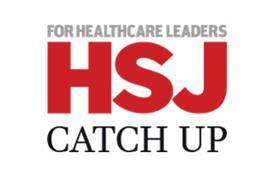


















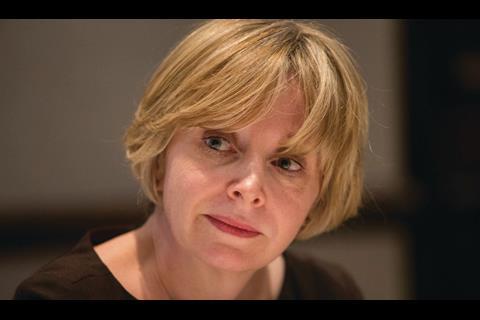

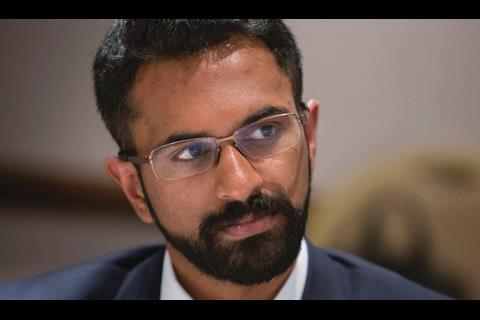
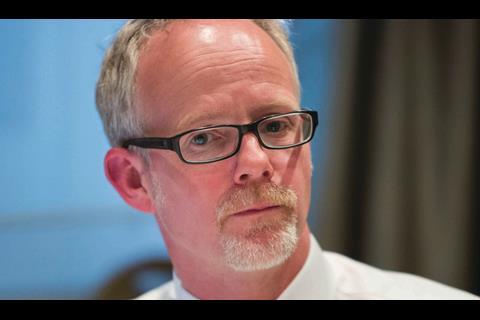
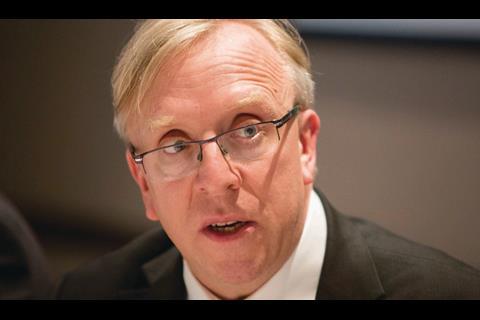

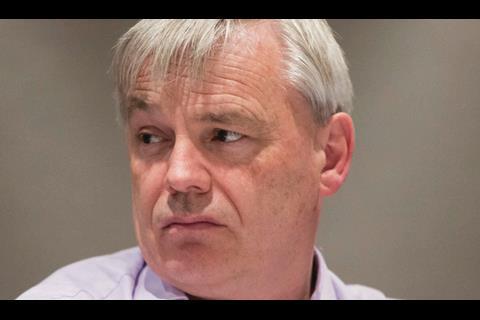


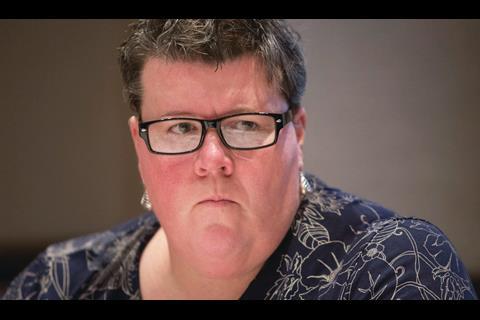







3 Readers' comments